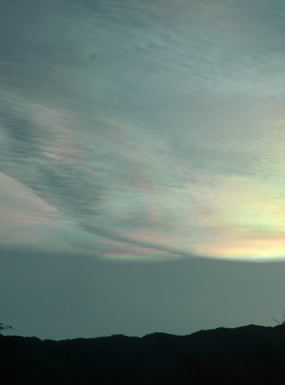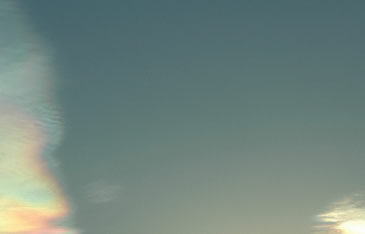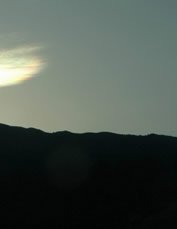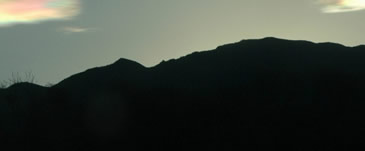
OPOD
What's New
Rays & Shadows
Water Droplets
Clouds & Fog
Droplets & Light
Corona
Iridescent Clouds
More images
Fogbow
The Glory
Heiligenschein
IRIS software
Rainbows
Ice Halos
High Atmosphere
Links & Resources
Search - Index
123456789012345678

| Iridescent Clouds |
 |
 |
||
 |
 |
||
 |
|||
 |
|||
| Iridescent clouds Salta Province, Western Argentina captured near sunset by Dallas Rhodes of Georgia USA. Iridescence in clouds most often occurs close to the sun. It is best seen when the sun is hidden. Here it behind the hill at right of centre. Image ©Dallas D. Rhodes, shown with permission. |
|
When parts of clouds are thin and have
similar size droplets, diffraction can make them shine with colours
like a corona. In fact, the colours are essentially corona fragments.
The effect is called cloud iridescence or irisation, terms derived
from Iris the Greek personification of the rainbow. Sometimes iridescence can be seen far
from the sun but is most frequent near to it. As for coronas, search
safely by hiding the sun behind a building and, even better, also
viewing the reflection of the sky in water. |